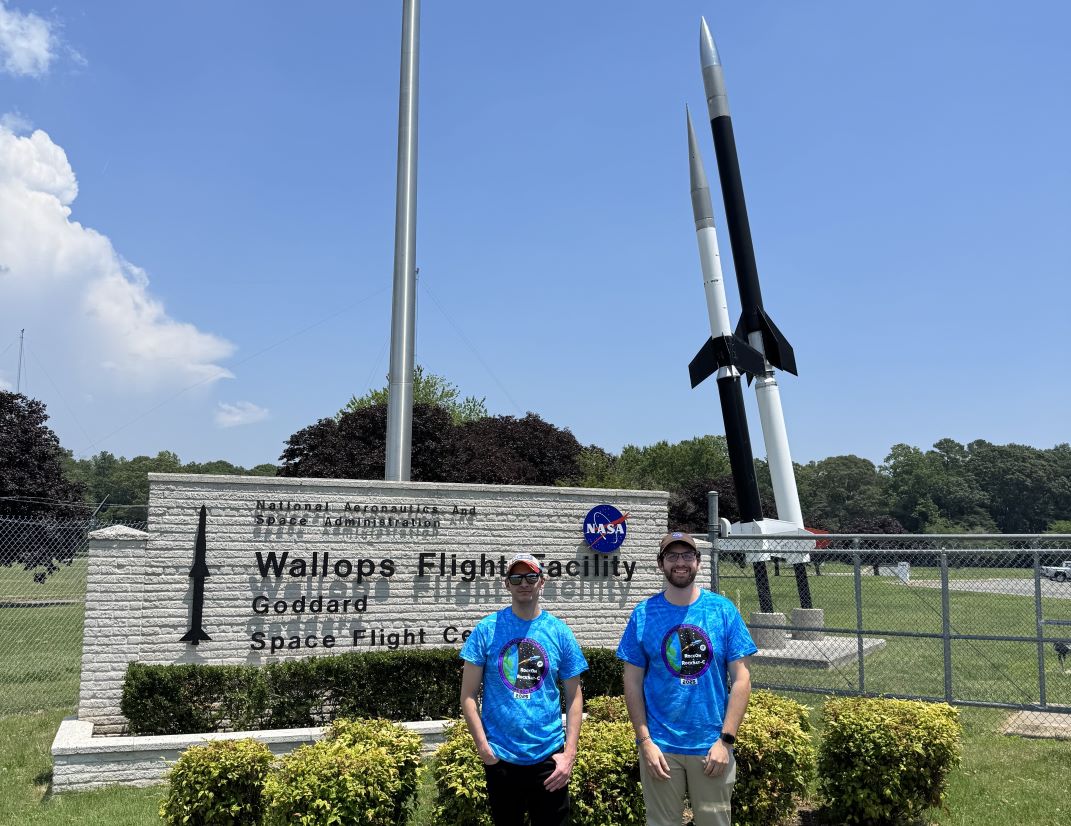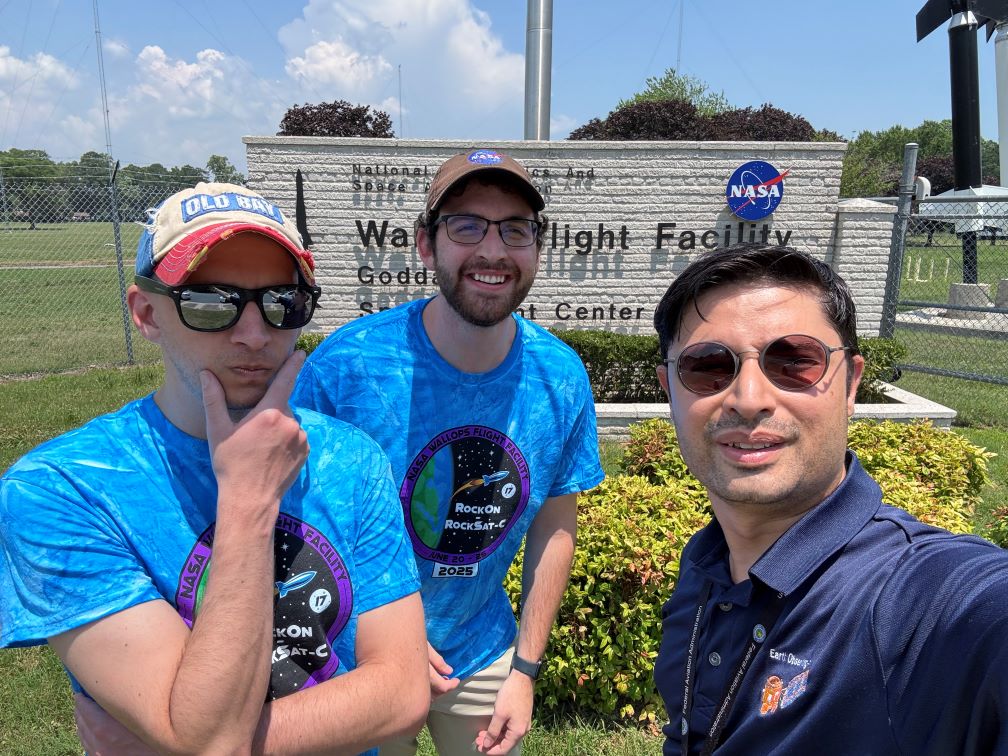Capitol Technology University students Taylor Fryer and James Gross, along with Astronautical Engineering Professor Rishabh Maharaja, successfully designed, built, and launched a scientific rocket payload device at RockOn 2025, held in June at NASA’s Wallops Flight Facility in Virginia.
The RockOn Payload Launch Camp was designed around daily tasks focusing on a specific phase of the payload build. Taylor, who is majoring in data science, and James, who is majoring in astronautical engineering, worked with components including a baseplate, electronics, batteries, measurement instruments, checklists, and other materials essential to developing a payload that can withstand the atmospheric elements of space.
Phase one of the project involved soldering computerized components onto the baseboards. Students then learned how to program the payload functions using an Arduino microcontroller and integrate it into the launch canister. On day 4, the canister was installed onto a sounding rocket provided by NASA, which launched on day 5.
Following the launch, students retrieved data from the payload instruments, including humidity, pressure, and temperature sensors, an accelerometer, a Geiger counter for determining radiation exposure, and an Inertial Measurement Unit that measures an object's specific force, angular rate, and orientation.
"At RockOn, you get a taste of the real engineering world—fast-paced, but incredibly rewarding," said Capitol Tech student and RockOn 2025 participant, Taylor Fryer. "It’s one thing to study space in class, but another to get your hands dirty, and wire a payload that actually launches into space."
The students also developed a custom virtual dashboard to visualize the data, which provided a valuable tool for analyzing flight and environmental conditions and will also help Capitol’s RockSat-X payload team with future development, data collection, and data dashboard projects for launches in the coming academic year.
“James and Taylor did a phenomenal job,” said Professor Maharaja. “They developed, integrated, tested, overcame anomalies, launched, ran post-flight checks of the payload, and performed decommutation of the data. Our students from Capitol really stood out—they were kind, respectful, and incredibly collaborative.”
The entire flight lasted 15 minutes, with the payload spending about five minutes in space and reaching an altitude of approximately 118.2 kilometers, or 73.45 miles. While it was a relatively short flight, the wealth of data and experience that the students gained over the five-day RockOn Camp will lead to long-term results for both these students and Capitol’s astronautical engineering programs.
Written by Juliana Walter




